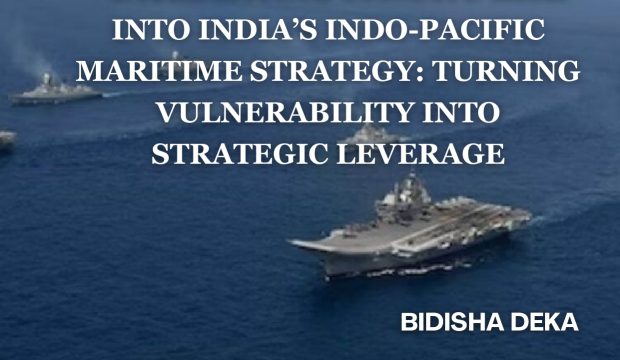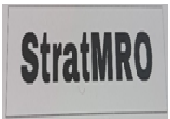Introduction
Subsea Cables
The International Cable Protection Committee (ICPC) is the one that goes unheard in the international community for cable protection. The ICPC, which was founded in 1958, is an international agency with 69 nations represented by around 190 member organisations, ranging from enterprises to governments and bodies. The name suggests its mission. The ICPC attempts to protect the huge network that spans the global waters by adopting rules centred on information exchange, awareness, and maintenance of Subsea cables.
As an organisation, the ICPC must address the issue of subsea cable security against intentional attacks. However, like with many international groups, this discourse is never followed by actual action.
The internet, WIFI, fibre optic cables, 5G, and satellite communications have drastically altered how the globe remains connected and communicates information.
However, subsea cables still account for about 97% of the info and data flows that result in transcontinental connectivity. Cables have been referred to as “Critical communications infrastructure” by the United Nations General Assembly. Intentional damage to subsea cables is also a serious infraction under the United Nations Convention on the Law of the Sea (UNCLOS). However, neither has an accountability system.
There are already 1.2 million kilometres of transoceanic underwater cables overlapping the world, transporting 97% of global data and their interruption may disrupt everything from financial transactions to military operations. There are actors who are posing a serious threat to this critical infrastructure through seabed warfare. It is a deadly type of hybrid warfare that is simple to launch but highly complex to defend, and the subsea cables present a critical vulnerability of being disrupted or tampered with.
Upheaval of the Cables
Historic actions
War is a human venture. Human activities are touching onto the seabed, then war will follow. But the fact is that identifying this threat is far from novel. And it was the United Kingdom that invented cable-cutting a little over a century ago.
Britain possessed the most sophisticated underwater telegraph cable system at the onset of World War One. Because of the British Empire’s reach, it extended across the world. The commanding position presented an opportunity, and strategists were keen to seize it. But first, the German wires had to be handled.
Initially, cutting German wires was viewed as largely a means of denying the enemy the capacity to communicate. However, it soon became evident that it also provided intelligence opportunities.
Current
Following the crisis in Ukraine, NATO has hinted about probable Russian assaults on undersea cables. Moreover, with the sabotage of Nord Stream II, it has become evident that seabed warfare is brutal. Meanwhile, concerns about the rising US-China tech rivalry have raised the spectre of seabed warfare. Discussions have taken place regarding strengthening and solidification of organisations such as the International Telecommunication Union (ITU) and changing state-level policies to counter China’s growing presence in the telecommunications and subsea cable industries. However, international legislation has not kept up with digital-age advancements.
Indeed, no particular international legal system concentrating solely on subsea cables exists.
What is the current challenge?
Chinese
The possibility of underwater cables being sucked into a confrontation between China and self-ruled Taiwan has already become a reality. Two telecommunication cables connecting Taiwan to the Matsu islands, which are close to the Chinese shore, were severed by Chinese crafts in Feb 2023. The internet was cut off for the islands’ 14,000 people.
Taiwanese security forces believe the interruption was caused by a Chinese fishing craft and a Chinese cargo vessel. They stopped short of labelling it an intentional act, however, and claimed there was no clear evidence linking the Chinese ships to the incident. China, which regards Taiwan as a renegade province, has increased military and political pressure on the island to accept its authority.
To make matters even more complicated, cable maintenance is undertaken by chartered contracting businesses rather than governments, thus, eavesdropping is a major concern. Spy agencies may easily intercept wires that land in their jurisdiction. A surveillance gold mine for the world’s intelligence services.
China spent $1.1 billion to build 27,000 kilometres of cable controlled by over 40 businesses, including landing sites in the United States, Korea, Taiwan, and Japan. When it comes to U.S.-China tech competitiveness, espionage, and data acquisition, underwater cables are implicated in every element of these escalating geopolitical tensions.
In the event of a confrontation, China’s 15,000-kilometre-long ‘Peace Cable’ would be a key target. The backstage war between the United States and China over underwater cables is threatening the viability of subsea cable operations, which have long relied on cautious diplomatic partnerships to stay afloat.
Russian
In a 2021 military study, the UK government stated that Russia is pursuing deep-sea capabilities that can threaten undersea cables. There has been a “phenomenal increase in Russian submarine and underwater activity” during the previous 20 years and they in fact do possess deep sea capabilities.
According to the French government, Russia has been “upscaling in the field of seabed warfare” and is “very active” in all aspects of undersea conflict. A senior NATO officer stated in May 2023 that Russia is “actively mapping” gas pipelines and internet connections.
Russia is additionally acknowledged to have substantial undersea warfare capabilities and the ability to strike at its own time and location of choice.
Deep-Sea Information Warfare
Multiple components of the undersea cable sector raise hazard levels due to their worldwide nature. Among these features are highly interwoven international components, the complexity of international cable networks and lack of understanding of risk managers, regional laws and regulations impacting cable operations, and rising global risk levels.
There is no definitive literature on the condition of underwater cables in armed situations, but even a quick summary highlights the issue. The first concern is whether an undersea cable attack that occurs outside of a state’s territorial control counts as an “armed attack” for the purposes of UN Charter Article 51 , which permits the use of force by a state in self-defence.
Second, as the strategic relevance of cable networks rises, authoritarian control of firms poses geopolitical problems since state actors, like China, may determine, when, where, and how cables are erected, allowing them to “enable data interception and the development of technological dependence” across borders. Cable owners may include “backdoors” for monitoring landing stations, while cable builders may jeopardise physical infrastructure on the ocean surface . Nonetheless, Matsu’s internet outage and severance of cables has spurred several discussions regarding communication resilience, particularly in light of Chinese security threats.
Undersea Assets and Capabilities
China has multiple UUVs that have explored the world’s deep oceans below 11,000 ft. Chinese subsea warfare also makes use of UUVs. The HSU001, Type-094 Jinn-Class and Type-091 Han-Class vehicles are developed for seabed warfare capabilities, allowing it to endure and stay undiscovered in the ocean below for extended periods of time. The United States and China have the largest budgets for deep-sea activities.
The total number of submarines in the Chinese fleet is 56: 6 SSBNs (Submarine Ballistic Missile Submarines), 6 nuclear-powered assault submarines, 44 SSKs (diesel-electric assault submarines), and 17/44 have air-independent propulsion (AIP) activated . Deep seabed survey efforts in China are intended to exploit natural resources and collect oceanographic data in support of the Chinese Communist Party’s strategic goal of expanding the geographical scope and lethality of the PLA Navy’s (PLAN) “Blue-water submarine fleet”.
Deep bed surveys provide the PLAN with oceanographic information on the bottom topography, water temperature, salinity, and other elements of the “Ocean battlespace environment.”
QUAD’s Undersea Capabilities
QUAD Leaders from the United States, Japan, India, and Australia gathered in Australia on May 20 this year. While the meeting was just 47 minutes long, the leaders issued a joint statement, vision statement, and fact sheet in which they expressed support for high-quality underwater cable networks in the Indo-Pacific . However, a reality check would be in order
India
The Indian Navy now falls far behind in terms of undersea capability. There have been major delays in the construction of 6 electric-diesel submarines with sea-enabled AIP under “Project-75”. There is also a lack of real-time timetable for the induction of the 8 smaller High Endurance Autonomous Underwater Vehicles (HEAUV), which are containerized 8 ton vessels capable of anti-submarine warfare and mine countermeasure operations with an endurance of more than 2 weeks.
The Ministry of Defence (MoD) recently approved a flagship project to design and construct an Extra Large Unmanned Underwater Vehicle (XLUUV), and the Indian Navy is keen on buying up-to 12 XLUUVs once a prototype is developed and all trials are completed. The prototype XLUUV is planned to be developed by 2025. The XLUUV will be utilized for Intelligence, Surveillance, and Reconnaissance (ISR), anti-submarine, surface and mine warfare.
USA
As tensions with China rise across several maritime theatres, the US aims to develop a successor to its distinctive USS Jimmy Carter spy submarine, delivering the updated capabilities required for seabed warfare operations.
The US Navy would purchase one modified Virginia, subsea, and seabed warfare (Mod VA SSW) espionage variant of the Virginia-class nuclear assault submarine.
While many specifics of the Mod VA SSW are being kept under wraps, Naval News indicates that the submarine would carry specialist uncrewed underwater vehicles (UUV), remote-controlled vehicles, and special operations submarines. This will possibly constitute deterrence against China in the Indo-Pacific
Australia
Australia’s decision to acquire a commercial vessel to “conduct seabed warfare” activities follows similar steps by the United Kingdom and USA under the “AUKUS”. To complement deep-water AUV MCM activities, an OSV was purchased. Furthermore, the multi-role ocean surveillance ship (MROSS) initiative seeks to acquire vessels and develop capabilities, particularly to address seabed security concerns such as dangers to cables and pipelines. Commercial vessels will be employed in both scenarios, but for different purposes.
In the past, Australia had pulled out Huawei Marine (now HMN Tech) from an underwater cable project. It chose in 2018 to finance the development of an underwater cable connecting Sydney, Papua New Guinea, and the Solomon Islands, but excluding Huawei Marine. The Solomon Islands had previously placed an order with the Chinese business.
Along with the United States and Japan, it resolved in October to fund the construction of an underwater internet cable to the Pacific Island country of Palau.
Japan
According to expert evaluations, Japan is unquestionably one of the most ASW-competent military nations. Because the country is in a highly unstable geographical situation, the JMSDF is aiming to develop both defence and offensive submarine capabilities. According to the Global Firepower Report 2021, Japan is placed seventh among the top ten countries with the greatest military submarine fleets, with around 20 diesel-electric submarines as of now.
Implications for India
Defending important seabed infrastructure is a task that lends itself to both machine-human collaboration and completely self-directed operations, and it would almost certainly be a multi-domain attempt, including a range of permanent and mobile unmanned underwater and surface equipment. Satellites may detect the presence of suspicious surface vessels or the deployment of submarines with known seabed warfare capabilities. Another option is to deploy onboard AUVs to monitor undersea activity near sensitive areas. Aside from operating as a visual deterrent, USVs would also serve as AUV navigation, for communication, and energy hubs. But the human in the chain needs to stay on the top, and the chain needs to be made shorter for quick response.
It is also worth noting that the importance of the network of cables in the Indo-Pacific, including gas and oil pipelines along with communications and optical fibre, have risen tremendously in light of the Matsu Island incident and Nord Stream-II incident. Sabotage or destruction of undersea targets would not only damage the host state but would have regional and global repercussions and implications. However, countries such as the China and the United States could be unconcerned with the global economic consequences as long as it serves their national interests. India needs to develop capabilities where it can operate alone as well as with the Quad members, if required.
While there is growing worldwide agreement about the vulnerability of key subsea infrastructure, there are several legislative and international legal issues that must be resolved before feasible seabed defence systems can be implemented. Notwithstanding these efforts, India needs to develop deep-sea capabilities. Many of the operational ideas and supporting technologies required to secure subsea assets are currently in use or in development, and the blue tech community will be ready to mobilise when the time comes to put plans into action. Moreover, if recent events are any indicator, that day should arrive sooner rather than later.
Even with all of these cutting-edge innovations at their disposal, the expanding volume of undersea infra poses a significant constraint on what is feasible, creating a likelihood for innovative nations such as Japan and India to develop low-cost, eco-friendly safeguards to fill the inevitable gaps in protection. Perhaps an “underwater geofence” might disable the optical sensors of malicious UUVs, AUVs, ROVs, or manned submersibles.
Underwater warfare might not be the cheapest thing to do, but this is the kind of warfare that needs to be done in a quid pro quo manner in order to save our assets in the deep sea and maintain deterrence. Military commanders and leaders must include protection of these cables into their plans for undersea warfare to keep them secure.
The world will increasingly struggle to strike a balance between open data sharing norms that support democratic systems and the emergence of grandiose claims to digital sovereignty that underlie techno-authoritarianism. Potential conflicts are not only on papers but also in deep-sea infrastructure. And Indian armed forces, specifically the Navy, need to step up their efforts as soon as possible.
Conclusion
Creating such high-quality assets and procedures, however, is not a simple undertaking. Technological advancements are critical to the future of seabed warfare. India must allocate funds from its defence or national budget for improved research and development in the field of seabed warfare, which implies cheaper and smarter alternatives to replace large and costly burdens. Furthermore, AI capabilities and research will have a significant impact on how nations carry out seabed operations. Underwater operations will soon be undertaken by autonomous vehicles capable of making independent decisions. These intelligent underwater vehicles will be modified to deliver ISR, listen, assess, and retransmit, all acquired data to a surface-based control room.
Alternative measures to protect information must be the focus of the Quad Nations national plans. One approach would be to lay more cables in order to raise the system’s level of redundancy.
The submarine cable network is arguably the most significant strategic asset on the seabed. They create a distinct vulnerability that is difficult to defend and is vulnerable to an ambiguous legal framework. Any study of subsea warfare must consider cable protection. One way to do this is to establish and accept a treaty framework between the Quad Nations.
DISCLAIMER
The paper is author’s individual scholastic articulation and does not necessarily reflect the views of CENJOWS. The author certifies that the article is original in content, unpublished and it has not been submitted for publication/ web upload elsewhere and that the facts and figures quoted are duly referenced, as needed and are believed to be correct.
References
- The Quad needs to talk security for subsea cables | Lowy Institute. “The Quad Needs to Talk Security for Subsea Cables | Lowy Institute,” September 15, 2020. https://www.lowyinstitute.org/the-interpreter/quad-needs-talk-security-subsea-cables.
- U.S. Naval Institute. “Information Warfare in the Depths: An Analysis of Global Undersea Cable Networks,” May 31, 2023. https://www.usni.org/magazines/proceedings/2023/may/information-warfare-depths-analysis-global-undersea-cable-networks
House of Common Library “Seabed warfare: Protecting the UK’s undersea infrastructure”
https://commonslibrary.parliament.uk/seabed-warfare-protecting-the-uks-undersea-infrastructure/
- BBC News. “How Britain Pioneered Cable-Cutting in World War One,” n.d. https://www.bbc.com/news/world-europe-42367551.
- Cordell, Kristen. “The International Telecommunication Union: The Most Important UN Agency You Have Never Heard Of.” The International Telecommunication Union: The Most Important UN Agency You Have Never Heard Of, n.d. https://www.csis.org/analysis/international-telecommunication-union-most-important-un-agency-you-have-never-heard.
- Reuters. “U.S. and China Wage War beneath the Waves – over Internet Cables,” March 24, 2023. https://www.reuters.com/investigates/special-report/us-china-tech-cables/
- After Chinese Vessels Cut Matsu Internet Cables, Taiwan Seeks to Improve Its Communications Resilience – The Diplomat. “After Chinese Vessels Cut Matsu Internet Cables, Taiwan Seeks to Improve Its Communications Resilience,” April 15, 2023. https://thediplomat.com/2023/04/after-chinese-vessels-cut-matsu-internet-cables-taiwan-shows-its-communications-resilience/
- Reuters. “U.S. and China Wage War beneath the Waves – over Internet Cables,” March 24, 2023. https://www.reuters.com/investigates/special-report/us-china-tech-cables/
- Project under Digital Silk Road(DSR), Pakistan and East Africa connecting Europe(PEACE) fibre optic cable.
- Thomas Blaubach. “Connecting Beijing’S Global Infrastructure: The PEACE Cable in the Middle East and North Africa.” Middle East Institute. Middle East Institute, March 7, 2022. https://doi.org/https://www.mei.edu/publications/connecting-beijings-global-infrastructure-peace-cable-middle-east-and-north-africa.
Commodore Lahiri, Executive Director, NMF, interview by Abhyuday Saraswat. 2023. Sea Bed Warfare (17 July).
- Siebold, Sabine. “NATO Says Moscow May Sabotage Undersea Cables as Part of War on Ukraine.” Reuters, May 3, 2023. https://www.reuters.com/world/moscow-may-sabotage-undersea-cables-part-its-war-ukraine-nato-2023-05-03/
- Chapter VII: Article 51 — Charter of the United Nations — Repertory of Practice of United Nations Organs — Codification Division Publications. “Chapter VII: Article 51 — Charter of the United Nations — Repertory of Practice of United Nations Organs — Codification Division Publications,” August 23, 2016. https://legal.un.org/repertory/art51.shtml.
- U.S. Naval Institute. “Information Warfare in the Depths: An Analysis of Global Undersea Cable Networks,” May 31, 2023. https://www.usni.org/magazines/proceedings/2023/may/information-warfare-depths-analysis-global-undersea-cable-networks
- NTI. 2023. “China Submarine Capabilities.” NTI. 6 March. Accessed July 19, 2023. https://www.nti.org/analysis/articles/china-submarine-capabilities/
- Agnihotri, Captain Kamlesh Kumar. 2023. Leveraging High-Technology Development in the Chinese Military and Maritime Domains . Delhi: National Maritime Foundation
- The Ocean Battlespace is the area of oceanographic observations, assessing and prediction in the battlespace environment; submarine detection and classification ,anti-submarine, mine warfare applications for detecting and neutralising mines in the oceanic environment.
- Drake, Dr.Tom. “Ocean Battle Space Sensing.” Office of Naval Research. Office of Naval Research, Accessed July 10, 2023. https://doi.org/https://www.nre.navy.mil/organization/departments/code-32
- Nikkei Asia. “Quad Agrees to Bolster Submarine Cables in 47-Minute Summit,” n.d. https://asia.nikkei.com/Spotlight/G-7-in-Japan/Quad-agrees-to-bolster-submarine-cables-in-47-minute-summit.
- Seabed Warfare. “Seabed Warfare,” n.d. https://www.spsnavalforces.com/experts-speak/?id=595&h=Seabed-Warfare
- Asia Times. “New US Spy Sub Built for Seabed War with China,” April 24, 2023. https://asiatimes.com/2023/04/new-us-spy-sub-built-for-seabed-war-with-china/
- Staff, Naval News. “Australia Confirms Undersea Support Vessel Procurement – Naval News.” Naval News, April 11, 2023. https://www.navalnews.com/naval-news/2023/04/australia-confirms-undersea-support-vessel-procurement/.
- Aneja, Atul. “Indo-Pacific QUAD Set to Take on China in Subsea Cable War – Indianarrative.” Indianarrative, January 4, 2021. https://www.indianarrative.com/world-news/indo-pacific-quad-set-to-take-on-china-in-subsea-cable-war-14009.html
- Anti-submarine warfare capabilities of Japanese Maritime Self-Defense Force. “Anti-Submarine Warfare Capabilities of Japanese Maritime Self-Defense Force,” n.d. https://www.cescube.com/vp-anti-submarine-warfare-capabilities-of-japanese-maritime-self-defense-force
- A geofence is essentially a virtual fence also known as a perimeter, that revolves around a physical site and alerts when an object enters or attempts to exit this region or perimeter
Nrusingha Tripathy. “AN EFFICIENT SOLUTION TO REAL TIME GEO-FENCING FOR IOT OF A MOVING M2M DEVICE OVER 5G.” International Research Journal of Modernization in Engineering Technology and Science. International Research Journal of Modernization in Engineering Technology and Science, January 3, 2021. https://doi.org/https://www.irjmets.com/uploadedfiles/paper/volume3/issue_1_january_2021/5852/1628083239.pdf.
- Saraswat, Abhyuday, and Dr.Amit Gupta. Personal, July 18, 2023














































